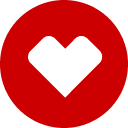
My prescription
Edit
30GM of 1.2-0.025%, Clindamycin-tretinoin (1 Tube)
Select pharmacy

CVS
$93.75
COUPON PRICE
Walmart
$153.25
COUPON PRICE
Walgreens
$153.30
COUPON PRICE
Albertsons
$452.80
COUPON PRICEClindamycin-tretinoin savings card
Show this card to your pharmacist
CVS
$93.75
BIN
ID
PCN
GRP
019876
LHBFC1804B
CHIPPO
LHX
Powered by
More prescriptions for acne
More prescriptions for acne
Price history for Ziana (brand) & Clindamycin-tretinoin (generic)
1 Tube, 30GM of 1.2-0.025%
Average retail price for Ziana
Average retail price for Clindamycin-tretinoin
Average SaveHealth price for Clindamycin-tretinoin
Our price history data is based on aggregated prescription data collected from participating pharmacies in America. Our prescription data updates daily to reflect the latest price changes. If you notice a missing data point, it means there wasn't sufficient data available to generate a monetary value for that date.
We analyzed Clindamycin-tretinoin prices for (30GM of 1.2-0.025%, 1 Tube) over the last 12 months. The average retail price was $464.10, while the average price using the SaveHealth discount card was $180.77. That's a savings of approximately 61.05% when using our Clindamycin-tretinoin coupon.
Compared to the generic version, Ziana had an average price of $419.45 over the same time period. With the SaveHealth savings card, Clindamycin-tretinoin is 56.90% cheaper on average than Ziana.
*Retail prices are based on pharmacy claims data, and may not be accurate when we don't have enough claims.
Clindamycin-tretinoin dosage forms
Dosage Quantity Price from Per unit 30GM of 1.2-0.025% 1 Tube $93.75 $93.75 30GM of 1.2-0.025% 2 Tubes $169.50 $84.75 30GM of 1.2-0.025% 3 Tubes $253.25 $84.42
| Dosage | Quantity | Price from | Per unit |
|---|---|---|---|
| 30GM of 1.2-0.025% | 1 Tube | $93.75 | $93.75 |
| 30GM of 1.2-0.025% | 2 Tubes | $169.50 | $84.75 |
| 30GM of 1.2-0.025% | 3 Tubes | $253.25 | $84.42 |
Clindamycin-tretinoin Warnings
When using Ziana (clindamycin/tretinoin), it is crucial to be aware of specific safety considerations that may impact your health. Below are important warnings and precautions to consider:
Severe Diarrhea: The clindamycin component in Ziana, like other antibiotics, has the potential to cause diarrhea by disrupting the balance of beneficial gut bacteria. Although this is less common with topical use than with oral antibiotics, in rare instances, it may result in diarrhea caused by the Clostridioides difficile (C. diff) bacteria. This type of diarrhea can be highly contagious and may lead to serious dehydration. Individuals with a history of bowel conditions such as Crohn's disease or ulcerative colitis, or those who have experienced severe antibiotic-related diarrhea before, should exercise caution. Taking probiotic supplements might help mitigate this risk. If C. diff infection occurs, frequent hand washing with soap for at least 20 seconds is recommended, and, if possible, use a separate bathroom from others until recovery.
Sunburns: Ziana (clindamycin/tretinoin) can increase skin sensitivity to sunlight, making it easier to develop sunburns. To protect your skin, avoid sun exposure when possible, apply a sunscreen with a minimum SPF of 30, and wear protective clothing, such as wide-brimmed hats, even during overcast conditions or in winter months.
These precautions are crucial for ensuring safe usage of Ziana (clindamycin/tretinoin). Always consult your healthcare provider with any questions or concerns regarding these warnings.
Clindamycin-tretinoin Side Effects
Common side effects:
- Skin redness
- Dryness
- Itching
- Peeling
- Mild burning or stinging sensation
Less common but important to monitor:
- Scaly skin
- Flu-like symptoms
- Burning sensation
Serious side effects:
- Blistering or crusting of the skin
- Severe burning or swelling
- Severe diarrhea
- Persistent diarrhea
- Abdominal pain
- Blood or mucus in stool
- Very serious allergic reaction (rash, severe dizziness, trouble breathing)
Clindamycin-tretinoin Interactions
Interactions with moderate risk that may require dose adjustment, closer monitoring, or timing changes:
